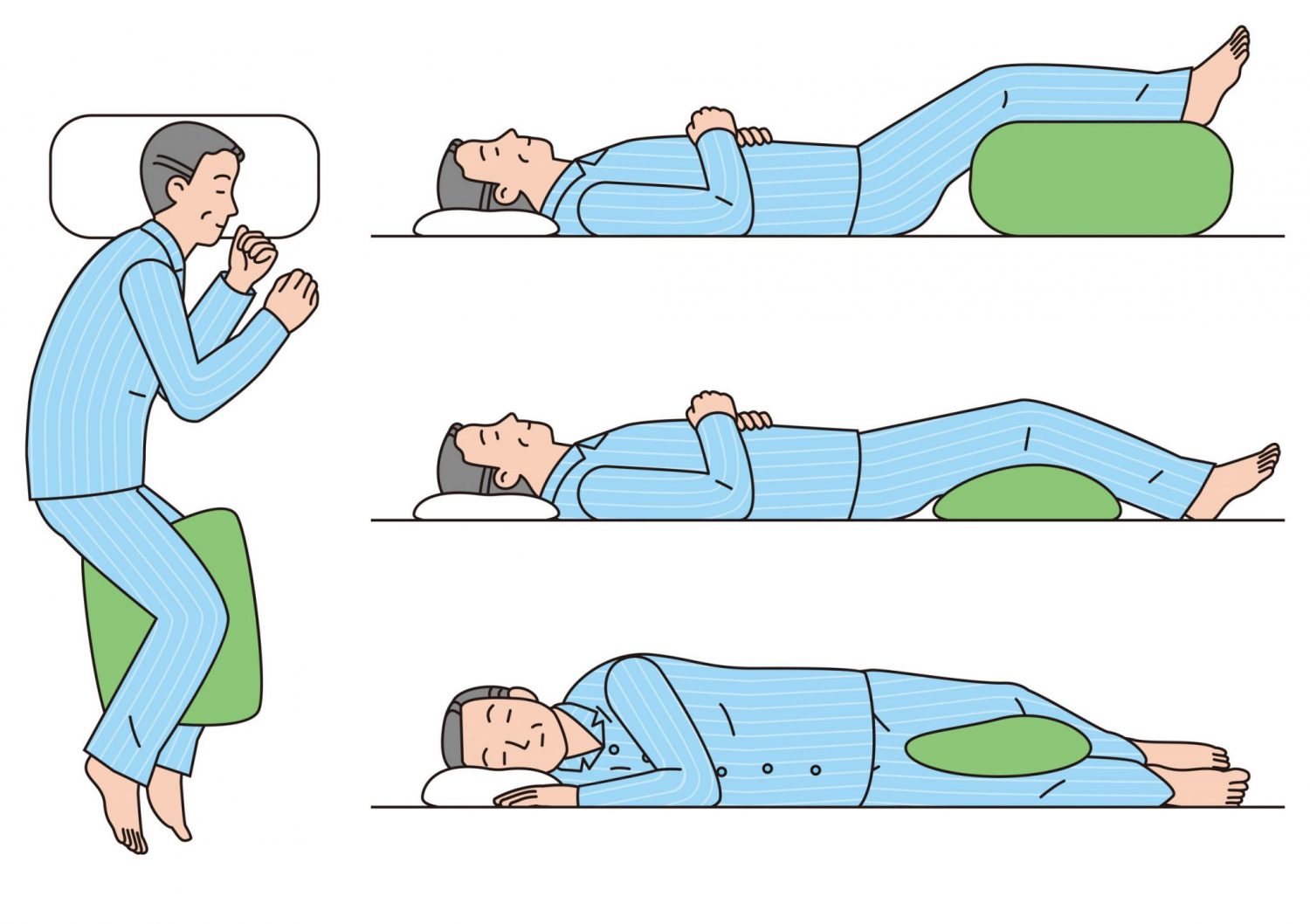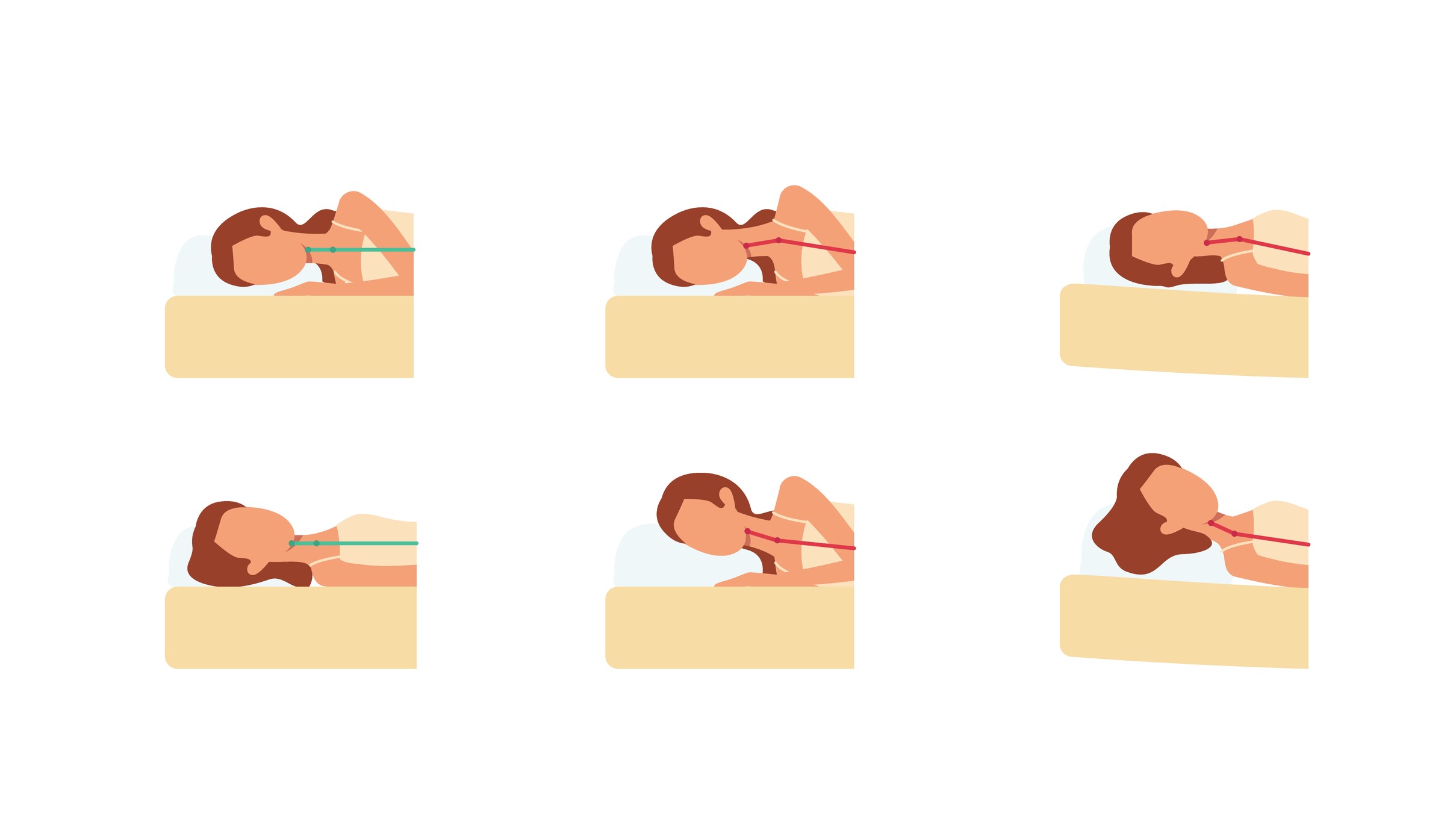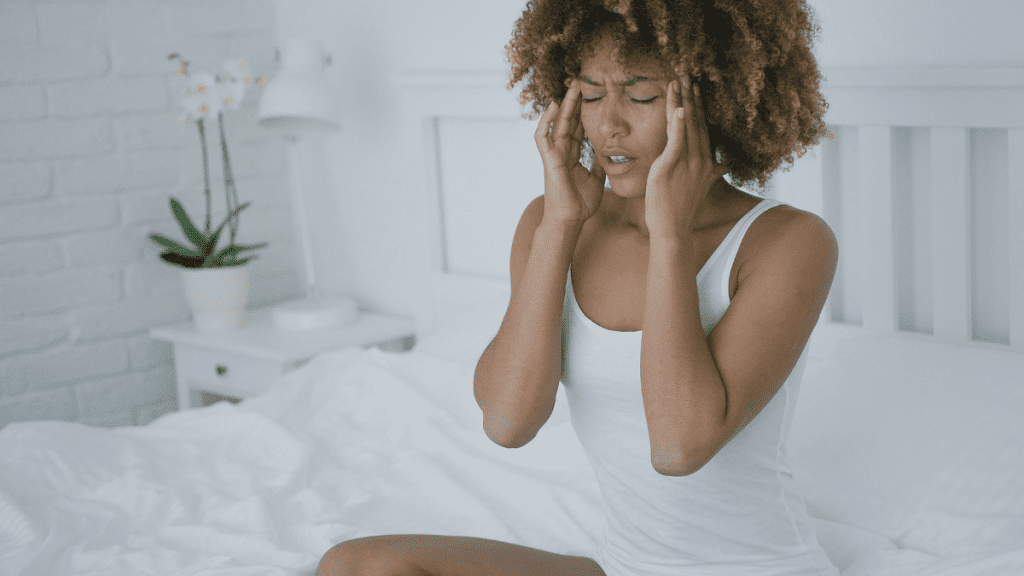
When you’re dealing with a chronic pain condition, getting good-quality sleep can seem almost impossible. But sleep is essential to overall health, as it gives your body the chance to heal and regenerate. So, what can you do to help yourself drift off comfortably? Taking a look at your sleeping position is a great place to start.
Your sleeping position can have a major impact on the health of your spine. If you sleep awkwardly, you could end up aggravating an existing condition or cause pain that you didn’t have before. Luckily, the best way to maintain a happy spine is quite simple – keep it as neutral as possible. This means keeping your spine straight, from your head to your pelvis, while you sleep.
To help you on your journey to better sleep, we have some great guidelines for specific conditions. But remember that you may need to make adjustments depending on your body and your preferences. So, feel free to experiment until you find the right sleeping position for you.
Best Sleeping Positions for Back Pain
When it comes to tackling back troubles, choosing the right mattress is an essential first step. But if you’re suffering from one of the following issues, it’s equally important to find the best sleeping position for back pain. Adjusting the way you sleep can go a long way to relieving pressure points and easing discomfort.
1. Lower Back Pain
Chronic lower back pain is an all-too common problem these days and it can be seriously debilitating. You can reduce discomfort by reclining, which tends to be the best sleeping position for lower back pain. Don’t panic – you can achieve a reclined position in a few ways:
- Wedge cushion: These large foam cushions are the most affordable option. Buying a wedge cushion is also a great way to work out whether sleeping in a reclined position works for you. For added comfort while you sleep, you could also try lying on your back with a cushion under your knees.
- Reclining chair: These give your back a good level of support, while your legs are still elevated. They’re not as customisable as beds, but they can be a great option if you don’t want to invest in a new bed.
- Adjustable bed: If you find that sleeping in a reclined position greatly improves your comfort levels, it may be worth investing in an adjustable bed. The upper and lower parts of the bed can be raised and lowered via remote control, depending on your needs. They are usually available at a variety of price points, so you should find something to suit your budget.

2. Middle Back Pain
The primary cause of middle back pain is misalignment and excessive pressure on the spine. So, to sleep more comfortably, try the following positions:
- Sleeping on your back is the best sleeping position for middle back pain. But to avoid putting too much pressure on your spine, try placing a pillow under your knees, as well as under your head.
- If you’re a side-sleeper, keep your legs in alignment and put a pillow between them to help your pelvis relax.
- Another soothing alternative for sufferers of middle back pain is to sleep on your side with one knee pulled up and the other leg straight.
3. Upper Back Pain
Improving your posture is one of the most effective ways to alleviate upper back pain. But good sleep hygiene can also go a long way to easing the strain. For a comfier night’s sleep, check out the following tips:
- The best sleeping position for upper back pain is to lie flat on your back with your head and shoulders slightly elevated. The easiest way to achieve this is to use a pillow under your shoulders and neck area, with another one under your head. Elevating your knees with an additional pillow can also help to ease pressure and maintain the natural curve of your spine.
- If you sleep on your side, try bending your knees up towards your chest in the fetal position. Placing a pillow between your knees will help to keep your spine aligned and should also bring some pain relief.
4. Sciatica
Restful sleep is an important part of treating sciatica pain. But if you’re suffering from this frustrating condition, finding a comfortable sleeping position isn’t always easy. Thankfully, there are steps you can take to minimise your discomfort at night.
- Place a pillow between your knees: Some research suggests that side sleepers may benefit from putting a pillow between their legs, as this can help ease pressure on the spine.
- Elevate your knees: If you prefer sleeping on your back, try elevating your knees by sliding a pillow underneath them. Experiment with different cushions and pillows until you find the most comfortable position for you.
- Avoid sleeping on your stomach: Lying on your stomach tends to increase pressure on the joints of the spine – potentially resulting in more severe back pain.
Best Sleeping Positions for Neck Pain
When it comes to neck pain, prevention is much easier than finding a cure. Some causes of neck pain, such as joints wearing over time, are difficult to control. Luckily there are ways to minimise the pain: analyzing your sleeping position is a crucial first step.
There are two sleeping positions that are easiest on the neck – sleeping on your back or sleeping on your side. If you choose to sleep on your back, choose a rounded pillow to support the curve of your neck. You can create this shape yourself by putting a small neck roll into the pillow case of a larger, flatter pillow. Alternatively you can buy special pillows with built-in neck support and a flatter area for your head to fit comfortably.
If you choose to sleep on your side, make spinal alignment your priority. You can achieve this by using a pillow that is higher under your neck than under your head.

Best Sleeping Positions for Shoulder Pain
If you suffer from shoulder pain, you know how difficult it can be to get good-quality sleep. Shoulder pain can increase at night due to decreased movement and additional pressure on your joints. But if you want to improve the quality of your sleep, these positions are well worth trying:
- Sleep on your back: This is the best sleeping position for shoulder pain as it keeps your weight evenly distributed, your spine in the correct alignment, and reduces the amount of stress on your joints. For added support, place a pillow under your knees to keep them slightly elevated.
- Sleep on your good side: If you just can’t get comfortable on your back, try sleeping on the side opposite to your painful shoulder. Place a pillow between your legs to keep your hips aligned and to take pressure off your lower back.
- Support your head: Keep your upper body in the correct alignment by using a supportive pillow. It will help to keep your shoulder more comfortable. You could also add a neck roll, or even a rolled up towel, to give your neck some extra support.

Sleep Through the Night with To Better Days
So, you’ve invested in a great mattress, sorted out your sleeping position, and yet you’re still experiencing pain. This is where our active patches come in. Infused with vitamin D and dextrose, our patches are designed to deliver all-natural nutrients to joints, nerves and muscles, easing discomfort and helping the body to heal itself.
Each patch can deliver relief that lasts for 24 hours, so you can apply a patch to the skin two to three hours before bedtime and remove it just before going to bed or leave the patch overnight for a better night’s sleep.
[*In some cases, the adhesive in the patches can cause irritation if they are left for long periods of time or near direct sources of heat (eg. electric blankets) – so only leave them overnight if, like Doug, you know that your skin is not susceptible to irritation.]
Good-quality, restful sleep is essential to your overall health and wellbeing. So, if you find that chronic pain is affecting your nightly rest, give your sleep habits some serious consideration. Adjusting your sleeping position could have a significant impact on your comfort levels and, ultimately, could help you to wake up feeling rejuvenated rather than pain-wracked.



